Diamond : Properties, Uses and Virtues
Diamond : The star who needs no introduction!
Diamonds, symbols of elegance and luxury, have enchanted mankind for centuries with their dazzling brilliance and timeless appeal.
As the hardest known natural material, diamonds symbolise strength and endurance, making them a popular gemstone for engagement rings, family jewellery and investment pieces.
Let’s embark on a journey to explore the geological formation, historical significance and metaphysical properties of this extraordinary stone, as well as its different colours, enhancements and the care needed to preserve its timeless beauty.
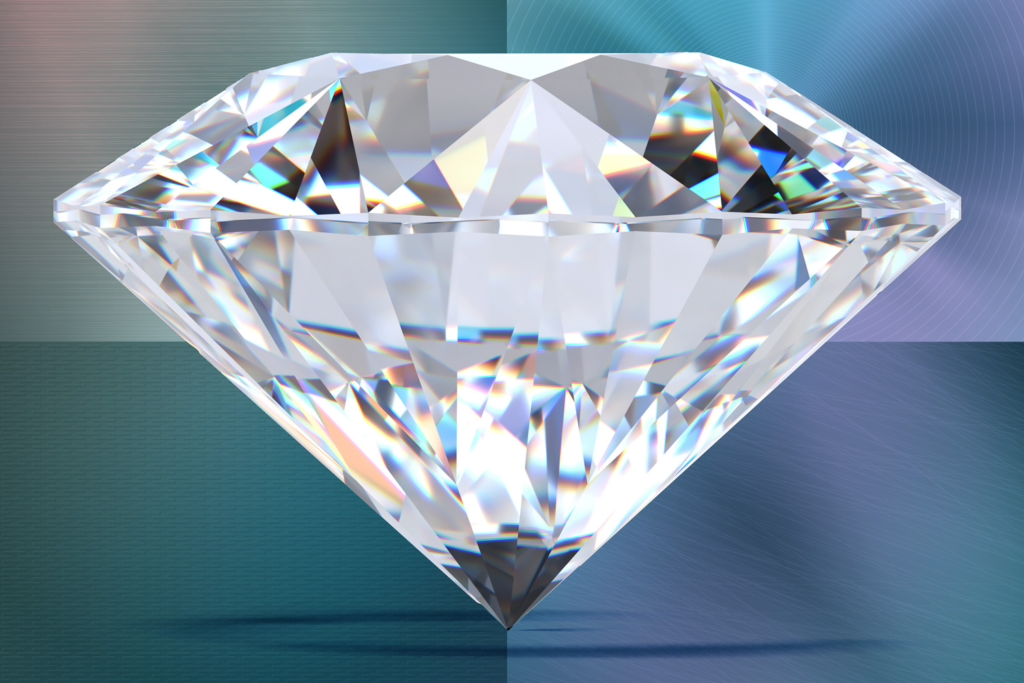
Diamond: Table of contents
- Diamond Geological Formation
- Rough Diamond – Raw Beauty Revealed
- Sources – The Global Reach of Diamonds
- Historical Significance of the Diamond – Through the Ages
- Some Famous Diamonds
- Metaphysical Properties of Diamonds – Illuminating energies
- Diamond Varieties
- Diamond Colors
- Diamond Durability and Wearability
- Diamond Enhancements – Preserving Natural Beauty
- Synthetic Diamond – Nature in the Laboratory
- Imitations of Diamond – Discerning the Authentic
- Diamond Care – Preserving natural beauty
- Adopting Ethical Diamonds – A Journey to Responsible Choices
Diamond Geological Formation
Diamonds are born under immense pressure and heat, deep in the Earth’s mantle.
Over millions of years, the carbon atoms arrange themselves into a crystalline structure, forming diamonds.
Through volcanic eruptions, these precious gems are brought close to the earth’s surface, where they can be mined and admired for their unrivalled beauty.
Rough Diamond – Raw Beauty Revealed
The appeal of uncut diamond crystals lies in their raw, natural beauty. Gemologists discover fascinating formations, each with its own unique charm and character.
Octahedral crystals:
The octahedral form is one of the most common diamond crystal formations. Composed of two pyramids joined at the base, this symmetrical shape is celebrated for its intrinsic beauty and distinctive character.
Dodecahedral crystals:
Dodecahedral crystals with twelve faces are another captivating manifestation of uncut diamonds. The combination of sharp edges and smooth surfaces makes these crystals fascinating for gem enthusiasts.
Sources – The Global Reach of Diamonds
Diamonds are found in various regions around the world, with major sources including South Africa, Russia, Botswana, Canada and Australia. Each location contributes unique characteristics to the diamonds, creating a diverse range of gems that captivate the world.
Historical Significance of the Diamond – Through the Ages
Diamonds have been objects of desire for centuries, with a rich history beginning in ancient India.
Throughout history, uncut or very roughly split diamonds can be found in jewellery and sceptres, as it was unthinkable at the time to cut a diamond due to its unrivalled hardness.
The fact that diamonds can be scratched and therefore cut themselves was not discovered until the 15th century, when diamond dust was used for this purpose. Their appeal was then extended to the European elite.
In the 19th century, the discovery of diamonds in South Africa changed the market, and by 1900 De Beers controlled 90% of rough diamonds.
The 20th century saw significant growth in diamond production, with new sources in Australia and Canada.
De Beers’ role has evolved, and scientific knowledge of diamonds has developed.
Today, diamonds continue to captivate hearts with their timeless splendour. It has become the symbol of the birthstone for the month of April.
Some Famous Diamonds
Throughout history, some remarkable diamonds have stood out:
The Hope Diamond:
One of the world’s most famous diamonds, the Hope Diamond is a 45.52-carat fancy blue diamond known for its deep blue colour and intriguing story. It is associated with legends of curses and has passed through the hands of various owners, including King Louis XIV of France.
The Koh-i-Noor Diamond:
This legendary diamond has a history stretching back thousands of years and has been part of many royal treasures. Now part of the British Crown Jewels, Koh-i-Noor is a 105.6 carat diamond with a captivating history of conquest and transfer of power.
The Cullinan Diamond:
The largest rough diamond ever discovered, the Cullinan Diamond weighed an incredible 3,106.75 carats. It was cut into several smaller diamonds, the largest of which, known as the Great Star of Africa or Cullinan I, adorns the British Sovereign’s Sceptre.
The Taylor-Burton Diamond:
This magnificent pear-shaped diamond, weighing 69.42 carats, became famous when it was bought by actor Richard Burton for his wife, Elizabeth Taylor, in 1969. The diamond’s association with the Hollywood legend has made it an iconic piece of jewellery.
The Green Diamond of Dresden :
Known for its rare green colour, the Dresden Green Diamond is a 41-carat fancy diamond that forms part of the Green Treasure collection in Dresden, Germany. Its unique hue and historical significance make it a highly prized gemstone.
The Orlov Diamond:
Also known as the Orloff Diamond, this 189.62 carat diamond has a legendary history and is supposed to have once been encrusted in the eye of a statue in a Hindu temple. It found its way to Russia and was then set in the Imperial Sceptre.
The Regent Diamond :
This 140.64-carat diamond is renowned for its exceptional clarity and brilliance. It was used in the crown of Louis XV of France and played a significant role in various historical events.
Le Diamant Millennium Star :
This flawless inner and outer diamond weighs 203.04 carats and is one of the largest colourless diamonds known. It was unveiled at the dawn of the new millennium and is part of the De Beers Millennium Diamond Collection.
Metaphysical Properties of Diamonds – Illuminating energies
In metaphysical beliefs, diamonds are associated with clarity, illumination and purity of spirit.
They are thought to enhance the wearer’s inner strength, bring positive energy and amplify their aura.
Diamonds are also thought to promote clarity of thought, making them a sought-after gemstone for those seeking to align their mind and spirit.
Diamond Varieties
There are a range of varieties, but exploring them requires an in-depth understanding of their chemical structure and the presence of nitrogen or boron atoms, making it a complex subject best suited to experts in the field.
For simplicity’s sake, diamonds come in two main varieties: colorless diamonds and fancy colored diamonds.
Colorless diamonds:
Also known as white diamonds, these are the most traditional and sought-after gemstones, renowned for their brilliance and purity.
Fancy colored diamonds:
Fancy colored diamonds encompass a multitude of captivating colors, including yellow, blue, pink, green and many more. The rarity and intensity of these colors greatly influence their value, with some of the most vividly colored diamonds being exceptionally valuable and sought after by collectors and connoisseurs.
Diamond Colors
Known for their incomparable brilliance, diamonds offer a bewitching spectrum of colors that will delight jewellery connoisseurs. While classic white diamonds remain highly coveted, diamonds can also come in a captivating range of fancy colors, each with its own unique charm and rarity.
- White Diamond in Shades of Color :
White diamonds: Sought after for their timeless elegance, white diamonds can sometimes have subtle shades of color. These shades of color are commonly found in shades of yellow, brown, green or grey. Although they are still considered white diamonds, these subtleties add a touch of individuality to each gem, making them attractive choices for discerning collectors.
- Fancy Diamonds :
Beyond the classic white diamonds, there is a captivating world of fancy colored diamonds, offering a palette of dazzling hues. This bewitching spectrum includes canary-yellow, champagne-brown, green, pink, blue, black, salt-and-pepper and, in extremely rare cases, shades of red or violet.
Each fancy-colored diamond has its own distinct beauty, with intense saturation and varied tones that contribute to its uniqueness.
Please note that many fancy colored diamonds have been irradiated to achieve intense hues.
Diamond Durability and Wearability
Diamonds are the hardest natural materials known, scoring a perfect 10 on the Mohs scale. This remarkable hardness ensures that the diamonds are incredibly durable and can withstand daily wear and tear without scratching or dulling.
As a result, diamond jewellery can be cherished and passed down from generation to generation, retaining its brilliance for eternity.
Diamond Enhancements – Preserving Natural Beauty
Diamonds, which form part of the prestigious club of ‘Precious Stones’ along with emeralds, rubies and sapphires, undergo various improvements to enhance their appearance and therefore their value. Although a small percentage of gem-quality diamonds undergo treatments, they are used for specific purposes, such as changing the color or improving clarity.
- Color Enhancements :
Irradiation: By subjecting diamonds to controlled irradiation, a range of colors can be obtained, including captivating hues such as green, blue, brown, yellow and black. This process can be accompanied by annealing, which further influences the color of the diamond.
High Pressure, High Temperature (HPHT) : Using cutting-edge technology similar to that used to grow synthetic diamonds, HPHT treatment can work wonders, transforming brownish diamonds into colorless ones or producing captivating hues such as yellow, green, pink, blue and orange-yellow.
Annealing: Thanks to precise heating and cooling, the color of a diamond can be transformed into exquisite shades such as brown, orange or yellow. This treatment allows a captivating series of color changes, from blue to green, brown and yellow, as desired.
Coatings: Diamonds with a colorless or near-colorless appearance can be subjected to silica coatings to reveal a range of fancy, natural-looking colors. Cette technique permet d’obtenir une gamme époustouflante de teintes, notamment des roses, des oranges, des jaunes, des bleus et des violets. However, it is essential to note that these coatings are not permanent and can be affected when jewellery is repaired or polished.
- Clarity improvements :
Fracture Filling: One of the most common treatments, this technique involves injecting a glass-like substance into the fractures of a diamond, thereby improving its clarity. Although successful, this treatment requires careful handling, as the filling can be vulnerable to damage during repairs or cleaning.
Laser drilling: This process creates small perforations to remove dark inclusions and improve the clarity of the diamond.
KM laser treatment: In this case, the dark inclusions are heated by the KM laser, creating small fractures. The acid is then used to reach the inclusions through these fractures. This technique leaves a small zigzag fracture, but it is generally difficult to detect.
Synthetic Diamond – Nature in the Laboratory
Laboratory-grown diamonds, also known as synthetic or manufactured diamonds, have gained in popularity as ethical and sustainable alternatives to natural diamonds. These diamonds are produced in controlled environments, mimicking the natural diamond formation process.
Although they have the same chemical and physical properties as natural diamonds, laboratory-cultured diamonds offer consumers a conscious and more affordable choice in their jewellery selections.
Imitations of Diamond – Discerning the Authentic
Given the unrivalled popularity and value of diamonds, imitations are common on the market. Almost all coloured gemstones or materials have been used to imitate diamonds, such as cubic zirconia (CZ), synthetic corundum, synthetic garnet, synthetic spinel, zircon and many others.
The most remarkable imitation comes from moissanite, a gem grown mainly in laboratories that perfectly imitates, if not surpasses, the characteristics of diamonds. With a hardness of 9.5 on the Mohs scale and a fire that far exceeds that of diamond, moissanite is often presented as a natural diamond.
As with many gems, and in particular the famous precious stones, buyers should exercise great caution and buy diamonds from reputable, certified jewellers and diamond specialists.
Diamond Care – Preserving natural beauty
Taking care of diamond jewellery ensures its lasting beauty and brilliance. Follow these steps to keep your diamonds sparkling for generations to come.
Diamond jewellery care guide :
- Gently clean your diamond jewellery with mild soapy water and a soft brush or cloth. Avoid aggressive chemicals and abrasive materials to protect precious metal settings.
- Keep your diamond jewellery away from chlorine, bleach and other aggressive chemicals that can damage the metal and the diamond itself.
- Store your diamond jewellery separately from other precious stones and metals to avoid scratches. Because of its perfect hardness, diamonds can easily damage other materials. Consider using soft pouches or individual compartments in a jewellery box for extra protection.
- Don’t forget to separate diamonds from their congeners, as diamonds can easily be scratched!
- Protect your diamond jewellery from violent shocks during physically demanding activities or sports to avoid chipping or damage.
- Regularly check the claws holding the diamond in place and quickly repair any loose claws to avoid losing the diamond.
By following these guidelines, your diamond jewellery will remain dazzling and well protected for many years.
Adopting Ethical Diamonds – A Journey to Responsible Choices
The diamond industry has made significant efforts to address ethical concerns related to diamond mining practices. The term “conflict-free diamonds” became widely known after the release of the film “Blood Diamond”, which highlighted the financing of civil wars by the diamond trade.
Although the Kimberley Process aims to prevent conflict diamonds from entering the world market, there are still challenges to be met to ensure fully ethical practices in diamond sourcing.
To find out more, please visit the page dedicated to ethical diamond practices.
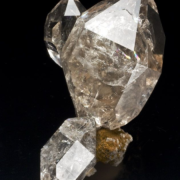
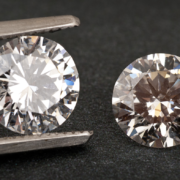
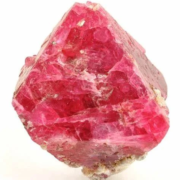
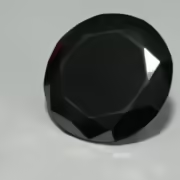
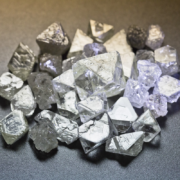
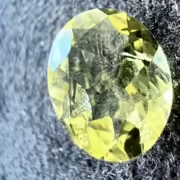


Leave a Reply
Want to join the discussion?Feel free to contribute!